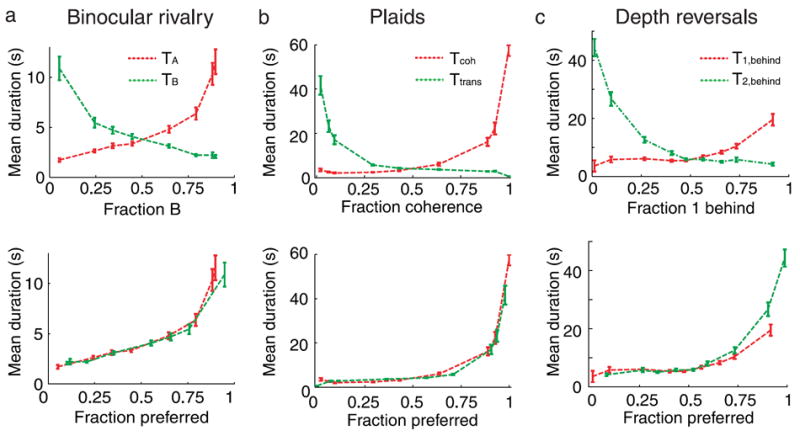Figure 6.

The stronger percept is more sensitive to stimulus manipulations than the weaker percept. (Top) Mean dominance durations for (a) binocular rivalry, (b) ambiguous plaid motion, and (c) gratings’ depth reversals as a function of the fraction of dominance time of a preselected percept (image B, Coherent percept, and grating 1 behind, respectively). When the fraction is larger than one half for one percept, its mean dominance duration is more sensitive to variations of the fraction of dominance; the mean dominance duration of the weaker percept is less sensitive or even remains constant. The absolute slopes are larger for the stronger percept in all cases. (Bottom) Same as before, but mean dominance durations for each percept are plotted as a function of its fraction of dominance (fpreferred).
